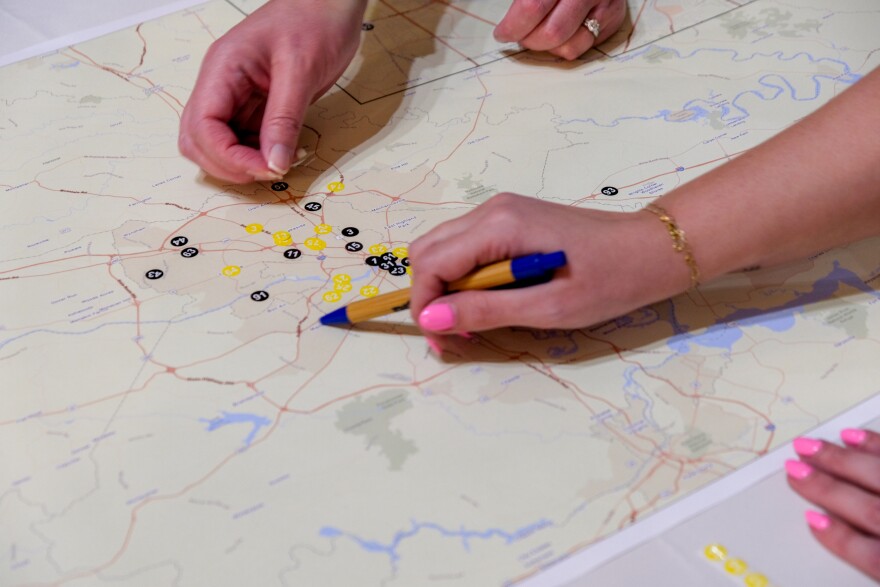Courtney Farrar has been riding the bus in and around Richmond since she was a kid. Back then, she didn’t notice any of the problems she’s experiencing now as an adult.
“It was very eye-opening in the sense of, you just don't know what you can't see,” said Farrar. “Not knowing that there weren't stops everywhere. And when you did get to those stops, you didn't have much covering over your head or nowhere to sit, no trash cans.”
Those are some of the major issues Farrar sees in the regional bus system that she’d like solved by 2050 — the tentative deadline for an upcoming, long-range multimodal transportation plan.
“Then there's also an issue with just simple access,” she said. “I just think that it's important that we get with PlanRVA and the different planning commissions to make sure that they know what we need and how we should go about it.”
Farrar was one of the speakers who shared their own transportation stories during PlanRVA’s Transportation Forum on Friday, March 15. The event had all the ingredients for a successful long-range plan launch party: food, slideshows, regional government officials, personal stories and a group activity.
This was just the first stage for a project planning period that will last about two years before a multi-decade improvement plan is finalized.
County supervisors, Richmond City Council members, local mayoral candidates and General Assembly delegates mingled with transportation experts and advocates at Richmond’s Main Street Station around tables decked out with large maps of the region, which participants used to pinpoint transportation issues.

But before all that, there was a brief panel discussion featuring personal stories of how the region’s transportation infrastructure impacts residents. Those included Farrar and bike rider Meg Lessard, who explained how ferrying her young children on a cargo bike — to day care and school — could be much safer with better infrastructure.
“My son attends Patrick Henry. So we bike from Manchester down Semmes toward the Forest Hill Park area,” Lessard said. “And then my daughter and I both — she goes to day care on the VCU Health System campus, and I work on that campus — we bike from Manchester over the river through Downtown to get there in the mornings.”
In all, her trip takes about 35 minutes to get everyone where they need to be. Lessard hopes that the infrastructure around keeping cyclists like her safe on the streets is a priority in the long-range plan.
“I think biking has so many benefits for both the community and the individual,” she said. “I think for that to happen, we need our planners to be more supportive of infrastructure, of engineering and of projects that can facilitate bikers — especially — bikers to feel safe. I think that is one of the hardest things to get people to make the switch to get out of their cars and onto their bikes.”
These are some of the issues that Sulabh Aryal, a PlanRVA transportation planning manager, wants to hear about. Starting in the fall, the organization will visit different communities, listen to focus groups and gather information on what people see as hurdles to getting around.
“We will make an inventory of those issues,” said Aryal. “It could be anything like ‘We don't have sidewalks in the street,’ could be ‘we don't have bus service,’ could be ‘I-64 or I-95 is congested.’ So [it] could be from anything small, anything big.”
Aryal said once they input all the collected data and map it out — in order to literally pinpoint where the issues are on a map — PlanRVA will try to come up with projects and solutions. He added that if there’s overlap between a proposal or an existing project or plan, the group will try to help them out.
Aryal said the goal is to create a “cost feasible” project list to get long-term improvements completed in the next 25 years: “We will look at all the budgets, the revenues, which might be available for, let's say 2050. And we try to prioritize projects and come up with a list.”
That list should drop sometime in April; the public will be able to weigh in until the plan is adopted formally in late 2026. According to Aryal, after that it’ll then be sent to state and federal transportation agencies as required by law.
Editor’s note: PlanRVA is a VPM donor.



